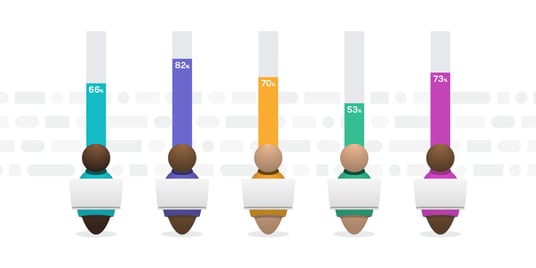The transition process from quality assurance to quality engineering isn’t always an easy one. Moving from an approach driven solely by test metrics to a fully developed quality framework that considers the entire customer journey and is integrated throughout the DevOps pipeline requires rethinking every aspect of the SDLC. The shift is particularly daunting for small quality teams already maximizing their resources with their existing testing strategy.
Opportunity cost is an important - but often overlooked - variable to consider when deciding to adopt quality engineering. The contrast of what team members are currently doing compared to what they’d be doing in a perfect world closes the gap between hypothetical vision and attainable goals. As quality teams make their plans for moving from a QA framework to QE strategy, factoring in the opportunity costs of not switching creates a compelling case that resonates with development teams and company leadership.
Recognizing the full potential of testing strategy
The goal of defining the opportunity cost of an ineffective testing strategy is understanding the gap between what the quality team would be doing in an ideal world versus their current priorities, tasks, and workload. In an ideal world where test strategy is guided by quality engineering, each team member is able to maximize their skills and expertise and meaningfully contribute to a better product, which translates to both happier employees and happier customers.
Sacrificing long-term success for short term wins
For teams with little to no test automation, QA professionals are likely spending the bulk of their time on the rote tasks of testing. While this hones their testing skills and builds product knowledge, it’s not the most impactful way to use software testers’ time and effort. If the main focus for quality assurance professionals is simply checking boxes on certain test suites and test coverage percentages, quality as a practice very quickly becomes static and outdated. New features are added, new integrations are needed, and the customer journey expands. If your testing strategy fails to adapt, the risk of software bugs making it to production rapidly increases.
Therefore, the opportunity costs of a manually driven testing strategy include not just the time it takes to run the entire suite of tests manually, but also the delays and issues caused by an outdated testing strategy that fails to account for API, mobile, or email and PDF testing. Though quality assurance managed through manual testing is sufficient to maintain minimal standards, the sustainable, more successful path long-term is quality engineering. To truly capture the value of shifting to QE, quality leaders need to factor in how testing strategy maintenance, customer standards, and release day stress will grow over time to capture the full opportunity costs of a short-term focused testing strategy.
Accounting for silo costs
A key aspect of quality engineering: cross-functional collaboration. Development and quality teams are closely integrated so testing can be shifted left to earlier stages of the development process. Quality leaders are familiar with the benefits to closer collaboration, but the time required to rethink and rebuild existing workflows is often an obstacle to getting buy-in from other teams.
Understanding the opportunity costs of siloed workflows builds a strong argument for investing the time needed to re-engineer typical workflows. As they create new tests in an intelligent test automation platform, quality professionals can dedicate specific times each week to “office hours,” ultimately simplifying the adoption process for new testers, developers, and product managers. Though this sounds time-intensive across all teams, the results - reducing the amount of code that needs major fixes and reducing the amount of customer-facing defects - is well worth the investment. Similarly to explaining the full opportunity costs of short-term testing, quality leaders need to factor in long-term quality improvements that will be made possible by quality engineering.
Planning your quality journey with a destination in mind
Explaining the opportunity costs of an ineffective testing strategy enables quality leaders to demonstrate the value of adopting quality engineering throughout the DevOps pipeline. Though the transition may require some up front investments, the opportunity costs of not embracing the quality mindset has significant implications for long-term growth and success. The invisible consequences of not maximizing the potential of quality team talent results in a static, ineffective testing strategy that cannot adapt to the changing needs of customers. Without integrated, collaborative quality engineering, enterprises are sacrificing short-term wins for long-term success.
Are you a QA leader making the shift to quality engineering? Register for a 14 day free trial and see how mabl can support your testing strategy with low-code test automation.






